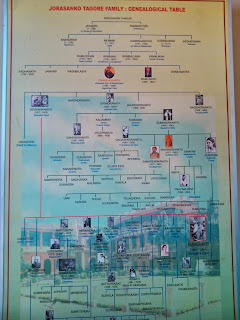Significance Of MAHALAYA In Bengal
Mahalaya marks the end of "Pitri Paksha" and the beginning of "Devi Paksha". People believe that Lord Shree Rama invoked Ma Durga on this day of 'Mahalaya Amavasya' for her blessings, just before his journey to Lanka to fight with Ravana and rescue his wife Sita. Some people believe that on this auspicious day Parvati - the wife of Lord Shiva started her journey from mount Kailash to her father mount Himalay's residence for five days. This annual arrival of Parvati is called Durga Puja in Bengal. The Bengalees worship Ma Durga with due devotion and dedication. Irrespective of castes and creeds, all the people enjoy this festival - young & old. Traditional pujas are performed in 'Banedi' families of Kolkata and Bengal. 'Baroari' puja also a phenomenon where Durga Puja is concern. The Bengalees wait throughout the year for this biggest festival of the year.
Another significance of 'Mahalaya' is "Tarpan". At the end of 'Pitri Paksha' - Hindus pay homage to their forefathers by offering holy water of river Ganga handful with 'mantras'. They believe that by this way, their forefathers become pleased and give them blessings.
According to Mahabharata legend, after the death of Karna, he went to heaven. He was offered jewels there as food. Karna was surprised to see this. Devraj Indra clarified that in lifetime Karna never offered food to his ancestors. So, it was his punishment. Karna replied, he didn’t know about this rituals and wanted to do this due. Karna came back on earth for only sixteen days and offered foods, water and other belongings to his ancestors and returned back to heaven.
Some believe that this autumn Durga Puja is actually 'Akal Bodhan' by Ramachandra.
According to mythology, king Suratha worshipped Devi Durga in spring time to get rid of his distress. But, Lord Shree Rama invoked Ma Durga on this day of 'Mahalaya' during autumn season. This is the day signifies the awakening of Devi Durga.
/>
In Purana, it is said that once the 'asuras' became very strong, they got blessings from Brahma that only a woman could kill them. Otherwise they are almost immortal. This blessings became a curse for gods as the demons or asuras captured the heaven. The gods and goddesses became feared and escaped from heaven. Their life became distressful. They became united and prayed to Lord Shiva to rescue them and prayed for Lord Shivas blessings if he could return the heaven to gods. Lord Shiva became angry to hear about the torture the demons made. He was furious. From his 'third eye' "tejas" poured and formed a beautiful woman called Devi Durga. All the gods supplied weapons to her to combat with the demons or asuras. Devi Durga has ten hands and ten frightful weapons made her more powerful. But, she thought, asuras never attempted to harm her, so, why she get angry with them? What was the reason to get angry with the asuras? As a beautiful woman, she went to Mahisasura to request him to return back the heaven to gods. But, Mahisasura became pleased to see her and proposed to marry her. Devi Durga became furious and called him to fight with her. Mahisasura was very proud of his own power, so he underestimated her and after a fearful fight, Mahisasura was killed by Devi Durga with her Trishul. Then, the gods re-captured the heaven. They offered pujas to Devi Durga and all the common people became devotees of Devi Durga, they started to offer pujas to Ma Durga during this autumn season as the festival called 'Sharadotsav' to Bengalees throughout the world.
When talking about Mahalaya and its connection to Bengalees, one can't forget about the eternal 'Mahishasur-Mardini' programme on radio at dawn by Birendra Krishna Bhadra. From generations, the shlokas and chants are so attached to the Bengalees culture that each year the dawn of Mahalaya appears with new hope with this eternal programme by Akashbani Kolkata.
Bengalees are experts in styling and they have a traditional sari, "Laal Paar Shada'' which they drape in a very specific way. The draping style is called by Bengalees as 'Aat Poure" and Bengalees mostly wear it during religious festivals, especially during Durga Ashtami and Dashami (the 8th and 10th days of Durga Puja).



Comments